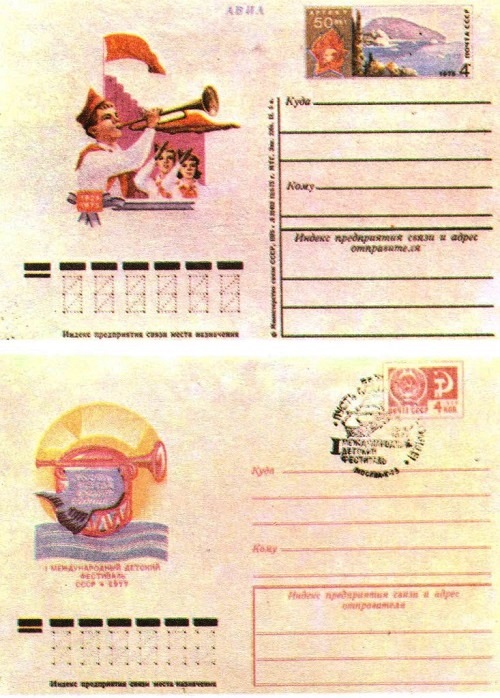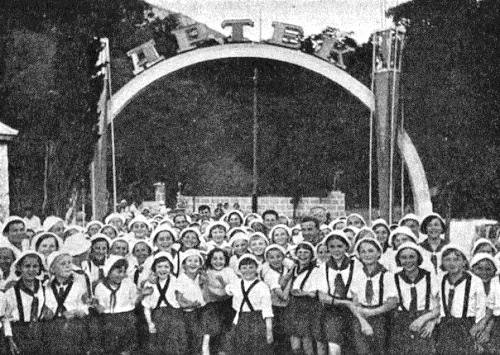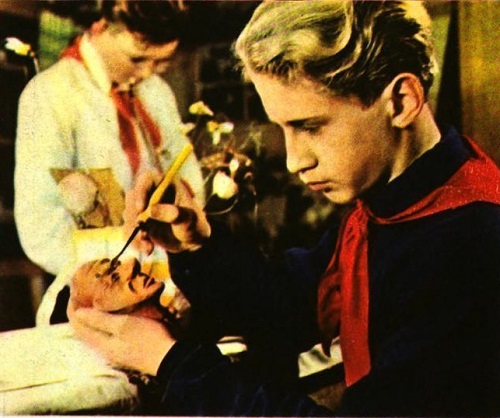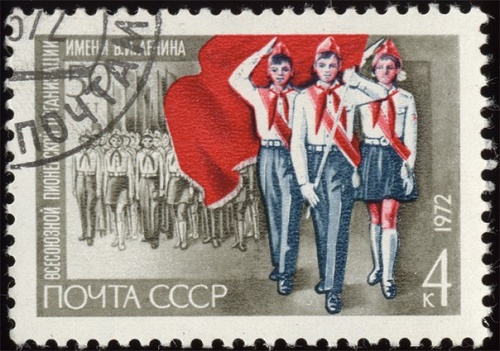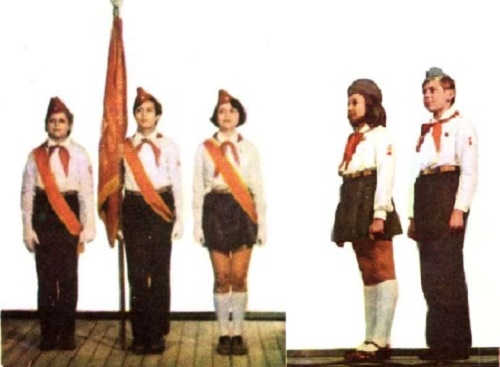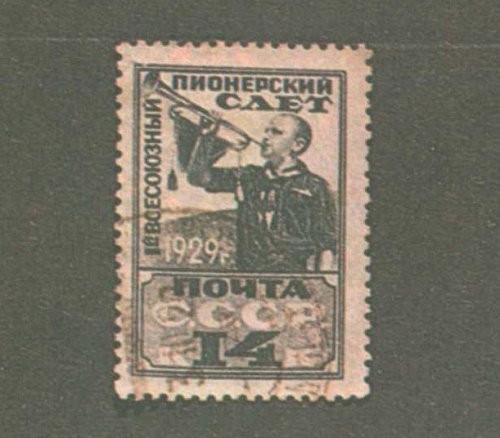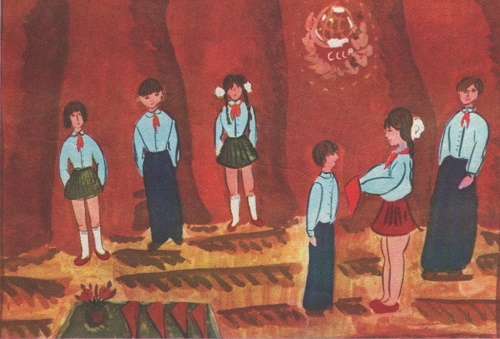Young Pioneer organization of the USSR

Young Pioneer organization of the USSR. Pioneer Honor guard at the rally of Komsomol. Moscow. Photo by S. Korshunov. 1929
May 19, 1922 – Day of the Young Pioneer organization of the USSR – Vladimir Lenin All-Union Pioneer Organization. In 1929 Soviet magazine “Screen” published a photograph of S. Korshunov – Pioneer honorary guard at the rally of Komsomol at Red Presnya. At the podium – the Chairman of the Central Executive Committee of the USSR – “all-union elder” Mikhail Kalinin. Next to him stands Commissar of Education Anatoly Lunacharsky. These were difficult years: the country was just beginning to rise after the Civil War. Still, the pioneers tried to look neat in their uniform. And what complete calm determination, faith, kindness on the guy’s face! Assistant-bearer, boy on the left, seems to be quite an adult. Maybe he is really older than the others – later came to school, but is now proud of his title. Or life forced him to grow up. After all, many of them will be Spain and Khalkhin Gol and in 1941 this generation will die in the fights against Hitler’s hordes, and those who survive – will drive them to Berlin …
1919. Under the leadership of party cells at state institutions and public organizations of the country appear the first children’s Communist associations. In a conversation with the children on the Red Square in May of the same year, Lenin said that the children – a better way to educate the Communards.
1922. The Young Communist League decided to create a children’s Communist organization. A great help in this important case assisted Mikhail Kalinin, Krupskaya and Lunacharsky. It was hard time. The country healed the wounds of the civil war and did not have enough fuel, food, clothing fabrics. Looking through the old archival photographs it can be seen how modestly dressed the children of workers, the pioneers of those early years. Nor did they have such a beautiful form which wore pioneers of 1960-80s at school.
The symbol of the continuity of struggle of generations became for pioneers red scarf worn then by advanced women workers. Pioneer tie, symbolizing the revolutionary banner initially looked like a scarf with four corners and fold diagonally in half. Later he became the same as now – triangular in shape.
1925. An increasing number of pioneering groups in towns and villages. Country Councils concerned about the health of the young generation. In summer, the first detachment of red-tie children settled in “Artek” camping summer camp on the Black Sea coast. Childish voice rang out, white panama flashed at sea. Since then, more than one generation of young Leninists passed hardening in this wonderful health resort.
About what the first inhabitants of the camp looked like say old photographs. Along with the birth of “Artek” was born and the first pioneering form. In the 30s it was a sailor shirt and pioneer tie. For some time the tie was attached by a special metal clip on which three symbolic flame tongues were depicted.
The young heroes of the Great Patriotic War, who gave their lives for their homeland, had a pioneer badge on the chest. The center of its compositions – pioneer fire. Three flames – Communists, Komsomol, Pioneers – have become a symbol of unity, common interests, goals, joint work for the benefit of the Fatherland. Initially, on the same icon was depicted a fire broken out of logs. After the war, was added flaming star, the center of which had the inscription “Always ready!”, And the image of the hammer and sickle. And now on it – the portrait of Vladimir Lenin, after whom was named children’s organization.
Symbols and attributes, stamps, photographs, and postcards can tell much about the life of pioneers. Here – pioneers at the desk, at the machine, in the tree planting. They construct a model of airplane, build models of spacecraft, provide first aid to victims.
On the Czechoslovak stamp you see a pioneer with the horn. At the exhibition of young philatelists of the world, which was held in Pardubice in 1957, were exhibited many stamps, postcards devoted to Young Pioneer organization of the USSR, and pioneer camp “Artek” in particularly.
Young Pioneer organization of the USSR

Artek Pioneers at a meeting with the composer, laureate of USSR State Prize Aleksandra Pakhmutova. 1983
Sources: journal Ogonyok, USSR, 1961
magazine Young Artist 1983, 1981, 1980


